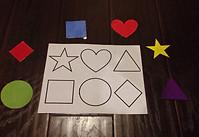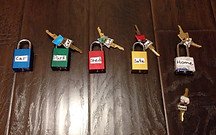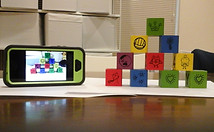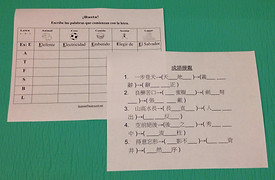Alice Li
Occupational Therapist, OTR/L
Testimonials
“I love your activities. They make therapies a lot more fun.”
-Patient
Building Blocks Designs
I remember back at my Level II Fieldwork Days I used to asked my geriatric patients, age 65 years and older, to play with building blocks. My patients usually stacked the blocks as high as possible. To add a refreshing outlook to the concept, I decided to make designs for my patients to follow or remember, so I can not only work on their memory but also visual perception and abstract reasoning. Currently, I made 60 designs, but I am going to make more as I go!
Latest Projects
Locks and Keys
This is one of my favorite activities: In order to open all the locks, the participant must use a single key to open the locks, and obtained another key to open the next lock. This activity works on the patients' fine motor skills, memory, visual perception, and more importantly, problem-solving. I purposely buy color locks to cross the language barrier, while also labeling the lock for patients with color-blindness.
PROJECTS
As an occupational therapist, I love to create activities for my patients to train on their problem-solving skills and other crucial skill sets to take care of themselves independently when they return home. Here are my projects made from January 2017 to January 2018. Please stay on tune as I made more activities
Medication Management
To ensure that patients can go home safely, as an occupational therapist, I want to see their ability to follow their prescription orders. Considering that my future patients can come from various backgrounds, I discovered that I should make my activities language-barrier free. As a result, I created the prescription instructions with English, Spanish, and Mandarin.
“Can I steal your student's (Alice) ideals?”
-Katie S from UPMC St. Margaret

Handmade Puzzle
I discovered that some puzzles sold at Amazon.com and in CVS or Walgreens can be difficult for some patients due to language barrier or severe cognitive impairment. As a result, I created this easy puzzle by hand to engage them more into therapy.
Letter A to Z Clips
This is one of the inventions that I made while I was a student at UPMC St. Margaret. This is also one of my favorite activities too. The place to put the clips are limitless. I can put the clips on the patient's clothing to work on their sensation, fine motor skills, and in/external shoulder rotations. I can also put the clips on the cupboard handles and inside the cupboards, so I can work on my patients' visual perception and shoulder flexion. The letters are purposely put on the clips to encourage problem-solving: After the patients collected the clips, they have to make a word from the clips. Through my experience at CA, I discovered that numbers can be a better alternative to reduce lanugage-barriers.




Menu Questions
I discovered that all of my patients love food. They love talking about food. Considering that looking through the menu requires ample of skills, including visual attention, scanning, tracking, and form constancy, I decided to make a set of menu questions in English, Mandarin, and Spanish.

Cheap Q-Bitz
I love this activity because this activity is cheap: I only use paper, pencil, ruler, and an eraser to make this activity. However, this activity is more than meets the eye. This activity tests on fine motor skills, and most importantly, abstract thinking. Therefore, by simply asking my patients to play this game, I can assess their cognitive levels.
Home-made speed stacking
Although the activity looks easy, this activity requires coordination, visual perception, attention, and problem-solving.

Non-English Word Games
Through working with patients from various backgrounds, I learned that each culture has their ways of playing word games. Patients from Mandarin-speaking cultures prefer to play "dragon-connects" in which the player said a proverb (or word) from the last character of the previous words. Whereas, patients from the Spanish culture prefers to play "Bastas" in which they write a word starting with the designated letter for each of the assigned categories. For instance, if the assigned letter is E, under the animal category, the patient has to write an animal that starts with an E.




Peg Designs
I would consider this as the "ancestor" design of the building blocks design because these designs work on FM and visual perception. It does not work on abstract reasoning and visual perception as much as the building blocks. Nevertheless, if I need to downgrade my activities from the building block design, I would definitely go for the peg designs.
Zip Stabilizer
While I was working with my patients with CVA at neuro-outpatient, I saw a patient with L hemiplegia requesting for help to zip his jacket. As a result, I created this zip stabilizer for him to zip his jacket independently. Although this zip stabilizer is functional, I am still trying to perfect it to make it easier to use.
Thick line guides
For people with normal visual perception, they can write in any paper neatly. However, for people with visual perception and coordination deficit, writing can be a difficult task. Therefore, I created this thick line guides for my patients to increased their legibility and used it as a reminder to put their wrist on the table as they write.

3D Maze
When I gave some patients a maze to complete, they appeared confused. They do not know what to do: They will start to color all the routes. To help them to understand the game better, I decided to make 3D mazes. By making the maze 3D with a marble, I can just tell them "Bring the marble from 1 to 2." However, one thing different about this 3D maze is that I add additional targets. So I can also ask my patient to bring the ball from 1 to the green circle. If they have trouble knowing where to go, I can ask them to draw a line on the plastic sheet protector to encourage them to use problem solving skills.

Giant connect the dot
Back in my outpatient neuro-hands rotation, I used to ask my patients to reach for the numbers. However, looking back, I realize that I can make a twist for these numbers by turning into connecting the dots! Now, I can even ask my patients not just to touch the numbers, but imagine what shape the numbers become!

Outline Puzzle
This activity is great for working on the following skills: Language expression, problem-solving, and visual perception. This activity is inspired by Clarissa, the blogger of Muchkins and Moms. I just made the activity catered towards the older adults, while stacking hidden problems into the puzzles.